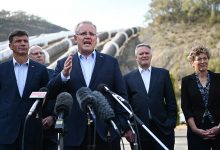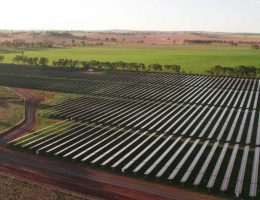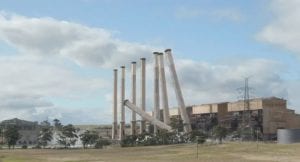The overwhelming majority of Australia’s rapidly transitioning electricity industry has rejected a key plank of proposed market reforms pushed by the federal Coalition, saying it will do nothing to boost reliability, ignores climate questions and will simply boost the bottom line of ageing coal generators.
The Energy Security Board has been tasked with a potential re-write of Australia’s market rules. Many of its proposed changes are welcomed because they will reflect the rapidly changing technologies and economics, but the sticking point has been a “capacity market” option seen to favour only coal.
Critics say that the ESB has completely neglected climate change in its analysis – as had the previous set of rules introduced more than two decades ago – and the proposed new mechanism (PRRO, or physical retailer reliability option) will do nothing for reliability, apart from propping up coal revenues.
Federal energy minister Angus Taylor has been a loud supporter of this new mechanism, but ironically the utility that his government owns, Snowy Hydro, appears to be dead against it.
Its CFO, Gordon Wymer, told an energy conference hosted by Credit Suisse on Thursday that it would result in higher prices for consumers. “I don’t see how it could possibly be more economically efficient,” Wymer said.
See also: Snowy sees room for five more gas plants, says 100 pct renewables “inconceivable”
Iberdrola, the Spanish-Based international energy giant that recently bought out Infigen Energy, said capacity markets of the type proposed by the ESB wouldn’t work in regions with high renewables, because coal plants couldn’t ramp quickly enough to fill in the gaps between wind and solar and changes in demand.
“Existing coal plants are completely incompatible with providing this capability,” Iberdrola’s Australia head Ross Rolfe wrote in the submission.
“Instead, new technologies such as hydrogen-ready gas turbines, batteries and pumped hydro are likely to be required. Providing incentives that favour existing inflexible plant is likely to enhance the risk to system reliability, rather than reduce it.”
This is a common theme through many submissions viewed by RenewEconomy.
It is widely assumed that only two companies with coal generation – EnergyAustralia (which owns Mt Piper and Yallourn and helped draft the proposal) and Alinta (Loy Yang B) – are supportive of the PRRO, but even Alinta’s submission hedges its bets on this point, saying that while it supports the general idea, it doesn’t like the details of the design.
“Alinta Energy does not support the financial RRO (FRRO) or, in its current form, the physical RRO (PRRO) model as proposed by the ESB,” Alinta says in its submission, saying the current design – vague as it is – appears too complex and will not allow new entrants.
Alinta CEO Jeff Dimery, speaking at the same conference as Snowy’s Wymer, said he supported capacity markets, such as those in Western Australia. “It is important we do have an orderly exit (of coal generators),” he said. “You will get more orderly outcome in a capacity market than in an energy only market.”
But Wymer said WA was a special case and the evidence from international markets was that capacity markets resulted in higher prices for consumers, and pointed to the example of the sudden Hazelwood closure – often cited by Taylor to underline the need for capacity markets – as an aberration.
Others were just as critical.
“The Physical RRO would effectively be a public subsidy to coal generators and would add to cost to consumers when we don’t believe the need for it has been established,” Environment Victoria said in its submission.
“The ‘immediate measures’ identified in the discussion paper, along with other tools such as the Reliability and Reserve Trader and regular and transparent reporting via the Electricity Statement of Opportunities, should serve to more than adequately manage the risk of earlier closures.”
The Clean Energy Council also expressed its concern around the PRRO idea, along with a potential reprise of the widely condemned “Cogati” proposals transmission costs.
“We are concerned (the PRRO) could entrench revenue streams for incumbent thermal generators potentially beyond their operational or economic life, while at the same time potentially deter new investment in lower cost dispatchable generation,” it says.
It added that the continuing intention to introduce locational marginal pricing (LMP) and financial transmission rights (FTRs), albeit as a longer-term reform, would introduce significant costs and uncertainty for limited benefit.
Most companies were supportive of other aspects of the ESB proposed reforms, although many noted that the details were unclear.
Still, markets that value the kind of essential services that will be needed to support a renewables-dominated grid – inertia, system strength and fast frequency response – are being proposed.
What is not clear is how they will be designed, yet the ESB is proposing to come up with firm proposals, after reviewing the submissions, by July.
The new markets are important because supporters say they will open up opportunities for flexible technologies such as battery storage and demand response. And the shift to 5-minute settlements means that coal generators, and many gas generators, will be too slow to keep up.
Iberdrola also addressed the issue of possibly paying coal generators to stay on line, an issue that has risen since Yallourn announced an early closure, but appears to have succeeded in gaining state government support to stay open until 2028.
“The ESB should … recommend to governments not to pay units to remain online, but should instead strengthen the 42 month notice of closure requirements,” Iberdrola’s Rolfe said.
“If, however, the ESB does recommend establishing an Orderly Exit Management Contract framework, the ESB should explicitly recommend that contracts do not extend beyond 12 months.”
See also: How to decarbonise the grid without being held hostage to coal power










